Surface modified silica nanoparticles for synchronous magnetic
advertisement
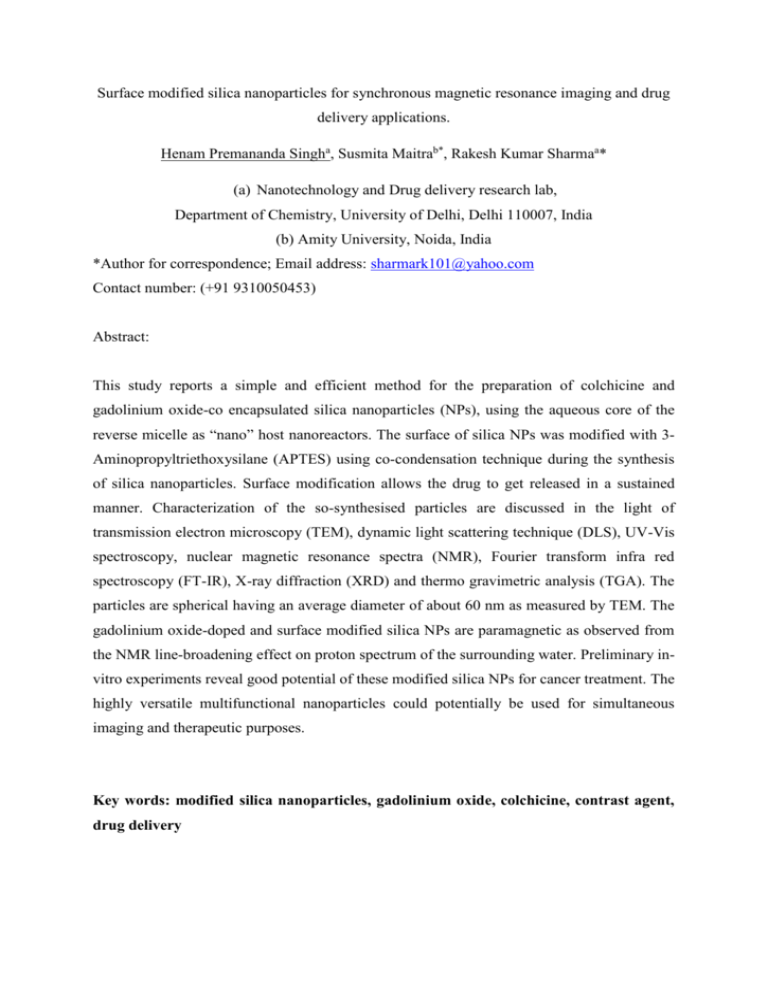
Surface modified silica nanoparticles for synchronous magnetic resonance imaging and drug delivery applications. Henam Premananda Singha, Susmita Maitrab*, Rakesh Kumar Sharmaa* (a) Nanotechnology and Drug delivery research lab, Department of Chemistry, University of Delhi, Delhi 110007, India (b) Amity University, Noida, India *Author for correspondence; Email address: sharmark101@yahoo.com Contact number: (+91 9310050453) Abstract: This study reports a simple and efficient method for the preparation of colchicine and gadolinium oxide-co encapsulated silica nanoparticles (NPs), using the aqueous core of the reverse micelle as “nano” host nanoreactors. The surface of silica NPs was modified with 3Aminopropyltriethoxysilane (APTES) using co-condensation technique during the synthesis of silica nanoparticles. Surface modification allows the drug to get released in a sustained manner. Characterization of the so-synthesised particles are discussed in the light of transmission electron microscopy (TEM), dynamic light scattering technique (DLS), UV-Vis spectroscopy, nuclear magnetic resonance spectra (NMR), Fourier transform infra red spectroscopy (FT-IR), X-ray diffraction (XRD) and thermo gravimetric analysis (TGA). The particles are spherical having an average diameter of about 60 nm as measured by TEM. The gadolinium oxide-doped and surface modified silica NPs are paramagnetic as observed from the NMR line-broadening effect on proton spectrum of the surrounding water. Preliminary invitro experiments reveal good potential of these modified silica NPs for cancer treatment. The highly versatile multifunctional nanoparticles could potentially be used for simultaneous imaging and therapeutic purposes. Key words: modified silica nanoparticles, gadolinium oxide, colchicine, contrast agent, drug delivery

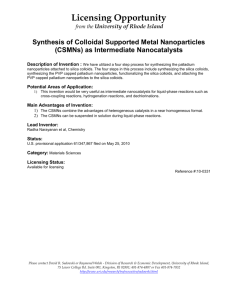
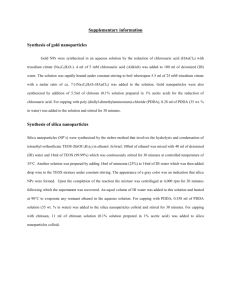
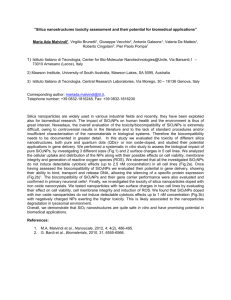
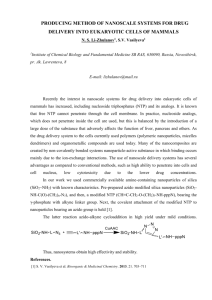

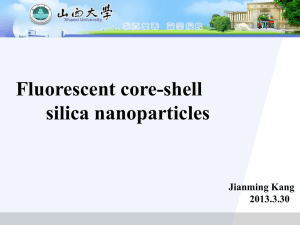

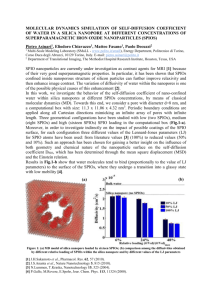
![[Supporting Information] Optical properties of noncontinuous gold](http://s3.studylib.net/store/data/007684451_2-c04229bef8743b93daf5996a3836829b-300x300.png)

